flipz12
Fresno, CA
27, joined Feb. 2013
|
Yes no maybe sooo..
Meet singles at DateHookup.dating, we're 100% free! Join now!

|
good_dr
Spokane, WA
53, joined Dec. 2011
|
Yes no maybe sooo..
What in the world does that have to do with being professional? Personally if that is all that you do. Don't come to work stoned, or get stoned at work. After work is your own thing. Being professional and stoned doesn't mix. Not on my time anyways.
|
jediknight2003

New Caney, TX
33, joined Jan. 2013
|
Yes I do. I refuse to be treated like some a**holes show dog. Step out of line and get put down like a rabid animal.
Astrology Math 101
–––––––––––––––––––––––––––
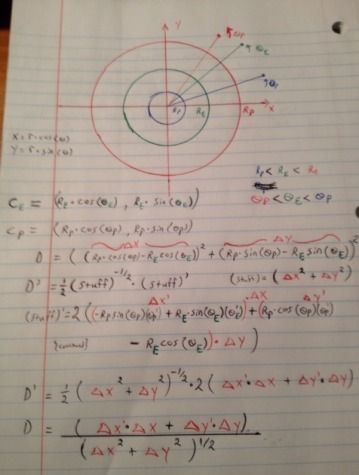
Orbital path about sun defined as basic circle or radius 'R(o)' with angular speed 'Ø(o)' is defined in Cartesian coordinates as:
X(o) = R(o)•cos( Ø(o)•t)
Y(o) = R(o)•sin( Ø(o)•t)
X(o)' = –R(o)sin( Ø(o)•t)•Ø(o)
Y(o)' = R(o)cos( Ø(o)•t)•Ø(o)
Distance formula:
D =
-___________2____________2_
\/ ( X(1) – X(o)) + ( Y(1) – Y(o))
Substitution:
/\X = X(1) – X(o)
/\Y = Y(1) – Y(o)
Derivative
D'( t ) =
------------2------2--(–1/2)
(1/2)•( /\X + /\Y ---) • 2 • (/\X•/\X' + /\Y•/\Y' )
Reduces to:
--------1
–––2–––2––– •(/\X•/\X' + /\Y•/\Y' )
\/ /\X + /\Y )
Or simply written as...
(/\X•/\X' + /\Y•/\Y' )
––––––––––––––
--------( D(t) )
Where
/\X' = X(1)' – X(o)'
/\Y' = Y(1)' – Y(o)'
Since the fields strength fluctuates with respect to the distance...
F =
-----1
–––––2–•(source ( t )
---D( t )
F’ =
– 2( D'( t ) )
––––––––3–• (source( t ))
----( D( t ) )
+ (1)/(D( t )^2)•( source( t ))'
(If we set the source to be a constant the second term will fall away in this.)
Substitute in for D'(t)
-------(/\X•/\X' + /\Y•/\Y' )
– 2 • ––––––––––4–––– • (Source(t))
----------------(D(t))
With this you can either calculate fluctuations by inputting the data for another planet, or you could set in the coordinates for a star.
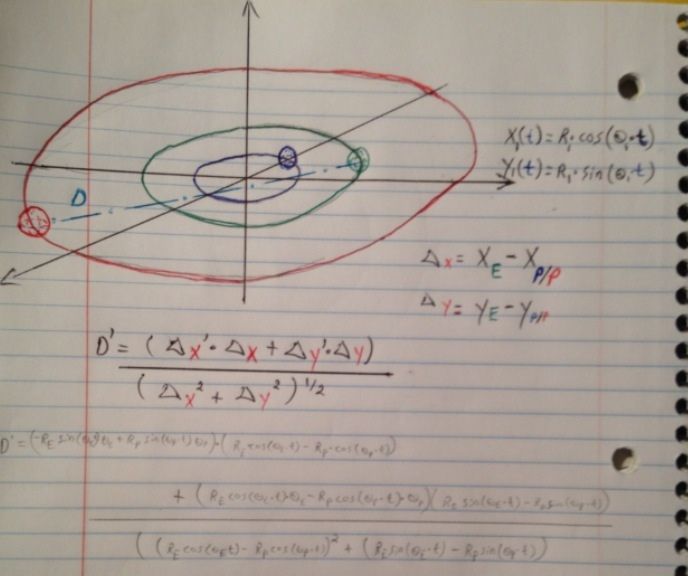
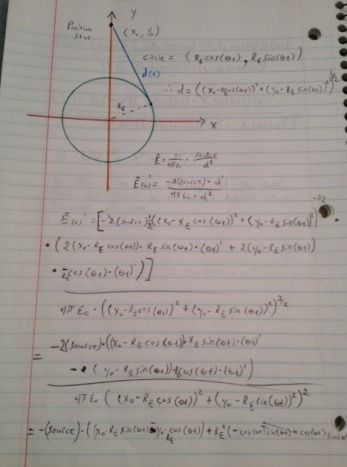
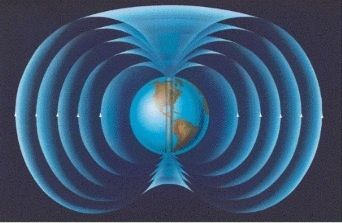
With each object, you have the maximum amplitude of polarity and it's relative frequency. However it's strength is inversely proportional to the square of the distance.
------(Source)
–––––––––––2–––
-----(Distance)
(--------((((------- -------))))--------) -------))))--------)
Double the distance and the strength reduces to a quarter of its' maximum.
-----1
––––––2–
---(2•d)
-----1
––––––2–
--( 4 )•d
If you half the distance...the strength increases 400%.
-----1
––––––2– • (Source)
---(d/2)
-----1
––––––2– • (Source)
--(1/4)•d
-----4
––––––2– • (Source)
-----d

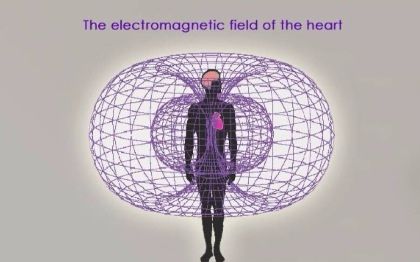

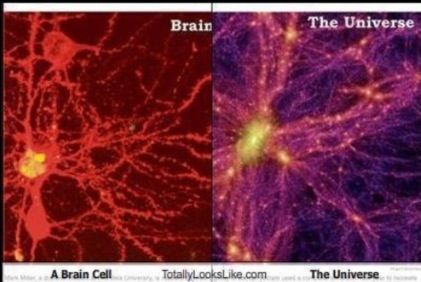
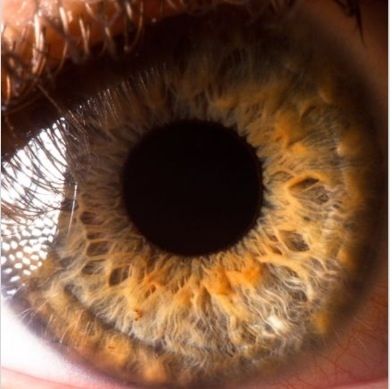

|
jediknight2003

New Caney, TX
33, joined Jan. 2013
|
With a graphing calculator you can plot the amplitude and frequencies coming from all the planets and stars.
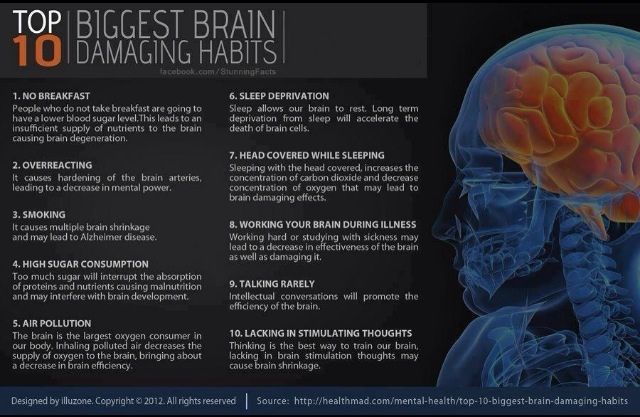
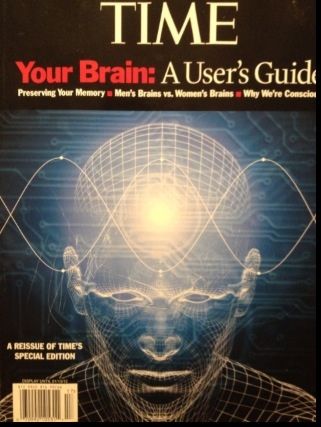
“Language And The Baby Brain”
...
“The roots of such prodigious talent lie in the design of the baby’s brain. All human brains contain roughly the same number of individual neurons–about 100 million. But a baby’s brain is wired differently, with any individual neuron connected to as many as 15,000 other neurons; each of those 15,000 then branches out in 15,000 other ways. Across the entire body of the brain, this adds up to well over 1 quadrillion cellular links. Adult brains have about 10,000.
It's this extra wiring that enables a baby’s brain to learn languages so easily, and the key to that gift is, partly, processing speed. If incoming information bombards the brain too fast, all the data bits will eventually run together, in much the same way music played at high speed becomes gibberish or a train whizzing by becomes a blur. The better you can distinguish a word, syllable and sound coming in, the better you'll learn to speak.
To clock how fast the ear processes word bits, Bensaich has babies listen to tones and phonemes separated by a 300-millisecond gap–fast by most standards but slow to the flash drive of the brain. Bensaich then steadily shortens the gap, all the while monitoring the babies with ERP readouts. Consistently, her studies show that the babies' brains have no trouble keeping up all the way down to 35 milliseconds, the point at which the length of the gap grows shorter than the length of the phoneme. Even then the babies keep pace, getting down to an 8-millisecond spread before finally going deaf to the breaks.
“The babies eventually fall behind not because they lose interest or because the brain's wiring gets overloaded,” says Benasich. “Rather, it's the individual neurons tone, it fires. But before it can register a new tone, it has to get back to chemical baseline. Eventually, the neurons simply can't do it fast enough.”
The younger a brain is, the faster it can go before the neurons give up this way. Parents raising multilingual children already know that the earlier they introduce a child to a second or third language, the less effort it takes to acquire. New studies are helping measure that phenomenon and are revealing that age differences of just a few months can make a big difference in learning.

The processing speed for sound goes all the way down to 8-milliseconds.
The first fields of energy we encounter, perceived through our pineal glands, are processed at this same speed.
That first period is a summation of energy fields at various frequencies and strengths, alignments create exponential spikes.
Each zodiac is similar to a base "language," or each planet and star carries an "accent" which we remember subconsciously for life.
This is also why early stimulation and bonding with parents is essential, we give off our own energies which are easily passed on to the infants. They are like tiny sponges.

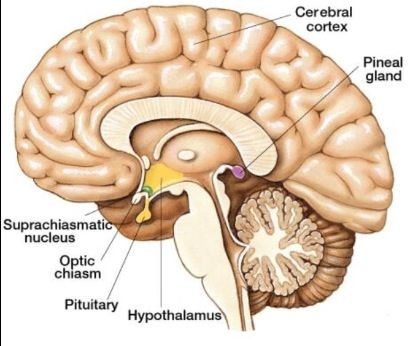
Sometimes I think of people in terms of math, as being complex quantities. In algebra II they define a complex number as having a real and an imaginary component.
z = x + î•y
If we let our thoughts define us, then our subconscious thoughts make up 90% and our conscious thoughts are just 10%.
Or...
Person = 90%•(subconscious) + 10%•(ego)
An ego is who people think they are, it's mostly based upon physical characteristics that are easily identifiable (ethnicity, sex, status, citizenship, career, ect...).
The subconscious portion is much more revealing, and goes into the nature of ones thoughts and actions.
With the zodiac you can find your true opposite in life, one who complements the 90% of your being, opposed to the narrow 10% of superficial / conscious thoughts.
This is just my opinion, it's based on other's work, and I accept it as fact based on theories that modern science has yet to accept. What you believe is your choice, as always.

http://electric-cosmos.org/indexOLD.htm
There is a revolution just beginning in astronomy/cosmology that will rival the one set off by Copernicus and Galileo. This revolution is based on the growing realization that the cosmos is highly electrical in nature. It is becoming clear that 99% of the universe is made up not of "invisible matter", but rather, of matter in the plasma state. Electrodynamic forces in electric plasmas are much stronger than the gravitational force.
Mainstream astrophysicists are continually “surprised” by new data sent back by space probes and orbiting telescopes. That ought to be a clue that something is wrong. New information always sends theoretical astrophysicists "back to the drawing board". In light of this, it is curious that they have such "c*ck-sure" attitudes about the infallibility of their present models. Those models seem to require major "patching up" every time a new space probe sends back data.
Astrophysicists and astronomers do not study experimental plasma dynamics in graduate school. They rarely take any courses in electrodynamic field theory, and thus they try to explain every new discovery via gravity, magnetism, and fluid dynamics which is all they understand. It is no wonder they cannot understand that 99% of all cosmic phenomena are due to plasma dynamics and not to gravity alone.
When confronted by observations that cast doubt on the validity of their theories, astrophysicists have circled their wagons and conjured up pseudo-scientific invisible entities such as neutron stars, weakly interacting massive particles, strange energy, and black holes. When confronted by solid evidence such as Halton Arp's photographs that contradict the Big Bang Theory, their response is to refuse him access to any major telescope in the U.S.
|